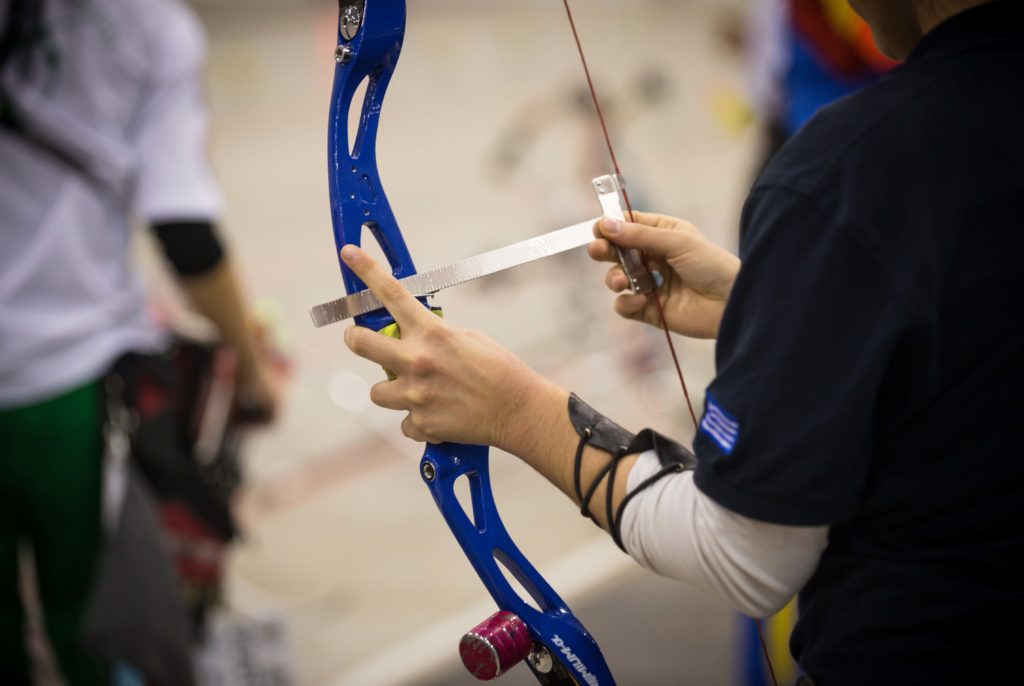Sick of the ‘new year, new you’ articles? So are we. Joe Parker gets down to the real work you need to put in throughout the winter months

Resolutions – don’t bother
There is abundant evidence to suggest that New Year’s Resolutions (there, I’ve grandiosely capitalised them) simply don’t work. There are many reasons why. One reason is that people may set goals that are too ambitious or unrealistic, which can be discouraging if they are not achieved.
Another is that people may not have a clear plan for how to achieve their goals or they may not track their progress, which can make it difficult to stay motivated. Additionally, people may not have strong enough personal motivation or support from others to help them stay on track. As well as all that, people may encounter unexpected challenges or setbacks that make it difficult to stick to their resolutions.
More generally, it’s a difficult time of the year to stick to anything – short and dark days, back to work after a break, and widespread illness. Which brings me to…
Cut yourself some slack
Actually not some – a lot. It’s been three long years with Covid and general upheaval, against a backdrop of multiple other issues. As social psychologist Oliver Burkeman puts it: “We’re all staggeringly imperfect organisms, prone to making bad decisions when stress, busyness or poverty robs us of ‘cognitive bandwidth”.’
Many of us are still adding expectations and projects on top of older, unfulfilled expectations and projects, in the face of much difficulty. Don’t be that person to yourself. Of course, if you’ve decided this is the year to make the Olympic team, that will require deep reserves of willpower and discipline – but it will require kindness, too.
Try for small habits, not lofty goals
If you really are trying to make that Olympic team, then you probably know that you will have to break down a big goal like that into smaller sub-goals. For the rest of us, it may be better to try to work on habits rather than goals. Google ‘tiny habits’ for some good ideas on making smaller changes that will last longer.
Another excellent alternative strategy is to focus on what you are not going to do this year. What activities, roles, habits, projects and goals are you going to let go of this year, to leave space for all the other important things instead?
Take up meditation
You may have seen this on some other lists, but there is no getting around it: meditating is an extremely effective tool for improving your life and your archery too. Many top champions have used it and continue to use it – Bow did an extensive feature on meditation and archery in issue 149.
It’s been credited with making you happier, more creative, less anxious and physically healthier in all kinds of ways – it’s been cited as improving everything from arthritis to Alzheimer’s. It can be practised in as little as five minutes a day, almost anywhere.
There’s no ‘wrong’ way to do it, and it’s free. You know when people say, “There really is no excuse…” for doing something? Even when there quite often is a good excuse? That’s not the case with meditation. Give it a try. (Bow recommends the Balance app for a great – and free for a while – introduction).
Keep shooting
We know the days of balmy summer evenings are long gone, and getting to the range after a long day at work can feel more like a chore than something to look forward to. You haven’t seen daylight in a week, and cosying up at home can definitely be more appealing than lugging your gear to a cold and draughty sports hall.
However, staying with it over the winter will mean you have far less to do to pick it up again when summer eventually rolls back around, both in terms of fitness and your raw technique.
However, if you have done a lot over the outdoor season and are feeling tired, burnt out or like you’ve fallen into a bit of an archery rut, take a couple of weeks away from archery to rest, recuperate, and come back to it with a fresh mindset.
Get your gear in order
Winter is the right time to go over all your kit and make sure it’s still performing at the standard it should. Give everything a clean, tighten all the screws that should be tight, and check all your measurements. Does anything need replacing or updating? It’s a great opportunity to incorporate new gear into your set-up without it interrupting a major competition period. Needless to say, add new items one at a time, and evaluate how it all feels before adding the next bit.


Your arrows are the single hardest-wearing item of all your equipment; they take quite a bit of punishment (and damage if your groups are nice and tight). Whether you shoot all carbon, carbon-aluminium or pure aluminium arrows, you should check for any cracks or dents in the shafts. Impacts in the target will weaken the arrow and can cause it to fly badly or even splinter when shot.
Spin each arrow by hand or use an arrow spinner; a bent shaft will not fly straight and consequently will not group with your other arrows. If you use carbon arrows, flex the shaft to check for hidden cracks; hold each end of the arrow just below the point and the nock.
Then gently flex the arrow away from you, putting at least one to two inches of deflection into the shaft. Listen out for any clicking or cracking noises – if you hear any, put that arrow straight in the bin.
Tune
Indoors is a great time for tuning; when there’s no malign influences from the weather to take into account, you know your results are going to be far more reliable. Look for the angle at which your arrows are hitting the target – are they straight, or are they going in leaning one way or another? Does your bare shaft land with the fletched group? Are you shooting bullet holes through paper? There’s not the space for a full tuning guide here, but there are plenty of reputable ones out there that will take you through the process.
Personal overhaul
Once you’ve got your set-up shooting just how you like it, why not use the indoor season to give yourself an archery MOT? Set up a session with a coach you trust to give you an honest appraisal of your form and any areas you could work on.
Even if you don’t have ready access to a coach, you can still use this time to identify any flaws in your technique. Write down your shot routine and get a friend or shooting buddy to film you going through your shot cycle. Watch it back and compare it to the shot routine you’ve written down – do they match? Are you doing what you think you’re doing?
Plot your groups
This is an excellent exercise to do indoors and one that can help with both your tuning and form work. Take a fresh target face and, if you’re able, shoot at it solo for the whole session. If you’re sharing details, mark your arrow holes with a pen. Try to make sure they’re good shots; if you start to get tired and you notice your form suffering with it, take a break or call it a night and take your target face back for analysis.
Look at the spread of your groups on the face. Do you have a tight, central group with one or two wide strays? Is your group taller than it is wide, or stretching to the left or right? Where do your bad arrows go?
While this can indicate a tuning issue, it can also point to some technique flaws you might be able to identify. For example, consistent wide arrows to one side might indicate you are canting the bow on a few shots, or have an occasional plucking release.
Compete – gently
Lots of counties, regions and clubs run winter leagues, offering you the chance to compete with other clubs and archers in your area from the convenience of your home range. These can be Portsmouth, Bray or even Frostbite rounds – check with your club records officer to see if your club is signed up to one, and put your scores in.
This is also a good way of tracking your scores over the winter months, and attempting to beat your score from the previous month is a fun challenge you can set yourself. If your club isn’t involved in one, rally some teammates and get in touch with the league organiser to submit your scores.
Volunteer
Why not take a step back from the shooting line yourself and get involved with beginner’s courses? If your club runs beginner sessions over the winter, volunteering to help out at these is an alternative way of keeping your hand in over the indoor season.
Nothing sharpens your understanding of good technique like having to explain it from scratch to someone who’s never done it before! Or volunteer somewhere else. Anywhere, in fact. Volunteering is powerful.
Plan
Following on from all the above, spending some time over the winter months to plan your next outdoor season is also worthwhile. Look back at the evaluation of last year you did: what events do you want to do again? Are there any you want to swap for something else?
Fill those in on a calendar, and add any personal events you know are coming that will need to be scheduled for – perhaps a big work project is going to fall due or you have a family birthday to plan. Look round those for your practice time, and see how much you have in the run-up to each event. Is there enough? Do you need to remove anything from your calendar in order to get the right amount of rest you need?
Stamina
Just because the rounds are shorter and the walking distances lesser, doesn’t mean fitness is any less important when it comes to getting the most out of your archery indoors. It is, however, harder to maintain if your arrow numbers are limited by hall hire times, but you can add reversals and bow drills to the end of your session for an added benefit.
You can also do these at home, and maintain your bow fitness year-round, but make sure you’re setting up and drawing with proper form as it’s no good practising bad technique. You could also start getting fitter and stronger with a kettlebell.


